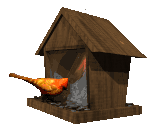








Newsletter
Welcome | Newsletter | Products | Contact Us | Links | VA Birds | HRBC.org | Facebook

Wild Wings Nature Store
12458C Warwick Blvd, Newport News, VA 23606
in the Glendale
Shopping Center
Monday - Friday 10:00am - 6:00pm
Saturday 9:00am - 6:00pm
Sunday 12:30pm
- 5:00pm
Your friendly birding store since 1991
757-595-3060

Privacy Statement
All customer information is secure, confidential, and private.
We
do not sell, lease, rent, or otherwise distribute any customer information to any
third-party agencies, companies or individuals.
Copyright © 2015, Wild Wings Nature Store, Newport News, VA 23606. All rights reserved.
Powered by Industrial Documents
Bird of the Month: Turkey Vultures
They are nature’s most opportunistic scavenger, soaring effortlessly in the air on the lookout for their next meal. These incredible efficient scavengers help humanity by eating dead animals, or Mother Nature’s garbage disposal for the earth.
The biblical vulture, from the mountains of Sinai, is the Lammergeier [from the German Lammer (lamb) and geier vulture], because it was thought to take lambs. Actually the vulture eats meat and bones, extracting the nutritious marrow by dropping larger bones from on high down to a favorite stone. Legendary old world vultures are widespread in Africa, Asia and Europe. The New World vultures are of the Cathartidae family (from the Greek kathartes), a cleanser because the vulture cleans up the dead. The American Turkey buzzard is a vulture. This is probably a South American name for this bird. North American settlers who gave them their common name thought they look a bit like a turkey and soared like European buzzard. The turkey vulture is a resident year round bird for us, and almost as big as a bald eagle. With a wing span of 6 feet, we see them all the time in our sky. It is an easy bird to identify. When overhead, look for the 2-tone blackish wing and the flight feathers are a paler gray and easy to spot. The turkey vultures are graceful in flight. The turkey vulture can soar up to six hours without flapping its wings, just by circling and tilting itself from side to side. The body is v-shaped in flight and the infrequency of them not flapping their wings makes it easy to identify from a distance. But up close you can’t miss the red, bald head that is smaller compared to its body. They have yellowish bills and have pink to reddish legs.
Interesting Turkey Vulture Facts
Turkey vultures will lay 2 eggs per year and both parents sit on the eggs. Young are born in 40 days.
Turkey vultures are found nesting on cliffs, in hollow trees and abandoned buildings.
Turkey vultures do not have any vocal organs and only hiss and grunt.
They only feed on dead animals unlike its cousin the black vulture who will feed on small live animals.
Turkey vultures like to feed alone as the black vulture feeds in groups.
Vultures feed on dead carcasses of animals and help lessen the chance of disease outbreaks like rabies.